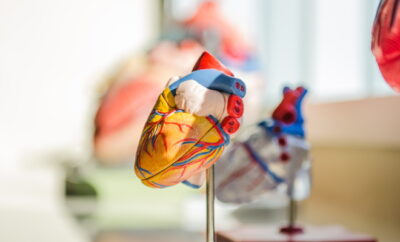
Health x Wellness
Breast cancer that focuses more on early detection and risk factors
Breast cancer is the number one cancer among women in Singapore. Studies have shown that early detection of cancer can improve the chance of survival.
According to the American Cancer Society, the 5-year relative survival rate is 99% if one’s breast cancer is detected early (within the localised stage).
Early detection – what does this involve?
Early detection involves screening and determining one’s risk for developing breast cancer. Established risk factors include:
- Increasing age
- Obesity including excessive weight gain in post-menopausal women
- Dense breast tissue – women with dense breast tissue seen on mammogram (defined as dense tissue comprising more than 75 percent of the breast) have a four to five times higher risk of breast cancer compared with women of similar age with less or no dense tissue.
- Menopausal hormone therapy (or hormone replacement therapy, HRT) over a prolonged period (more than 5 years)
- Reproductive factors: early menarche (onset of menstruation before age 12) or later menopause (after the age of 55), never being pregnant and late childbearing (after the age of 30)
- Personal history of breast cancer
- Family history of breast cancer
- Inherited genetic mutations (e.g. BRCA1 and BRCA2)
- Lifestyle factors: alcohol, smoking
Risk of breast cancer can also be categorised to high (greater than 20 percent lifetime risk), moderate (15 to 20 percent lifetime risk) and average (less than 15 percent lifetime risk).
Those who fall in the high risk (greater than 20 percent lifetime risk) category include:
- A personal history of breast cancer
- Confirmed or suspected genetic mutation known to increase breast cancer risk such as BRCA1 and BRCA2 among others
- History of previous radiation therapy to the chest between ages 10 and 30
Those who are at moderate risk (15-20 percent lifetime risk) include:
- Family history of breast cancer in a first-degree relative (mother, sister or daughter)
The majority of women are at average risk (less than 15 percent lifetime risk) of developing breast cancer.
Age is the most important factor in the decision about when to be screened as breast cancer incidence increases with age.
Screening modalities used:
Mammography is the preferred screening modality for breast cancer screening. It has shown to decrease mortality in multiple studies.
Screening guidelines for breast cancer in Singapore is as follows:
- Between 40 to 49 years: The decision for mammogram is individualised. Do have a discussion with your doctor about the risks and benefits as well as limitations of undergoing a mammogram. Should you decide for screening, it should be performed once a year.
- Between 50 to 69 years: Mammogram once every two years.
Other types of imaging such as magnetic resonance imaging (MRI) and ultrasound are mainly used as adjuncts to screening for certain higher-risk patients and as diagnostic, rather than screening, tools.
Women aged 30 years and older are recommended to do breast self-examination checks. Here’s another article with information on how to do breast self-examination.
It’s important to be aware of your own breast shape, size, feel, nipple appearance and skin overlying the breasts. Should you notice any change to any of these, or if there is an unexplained nipple discharge or lumps in your armpit(s), do consult your doctor.
Article contributed by Dr. Ezlyn Izharuddin. She is the resident doctor at DTAP Clinic, specialising in women’s health. She was also involved in a variety of Infectious Diseases research and has presented poster presentations at local and international Infectious Diseases conferences.
Dr Tan & Partners clinic (DTAP Clinic) was established in 2005 at Robertson Walk (Singapore). A pioneer of GP plus, or “General Practice with Special Interest” model in Singapore, with an aim to provide quality healthcare for everyone.









